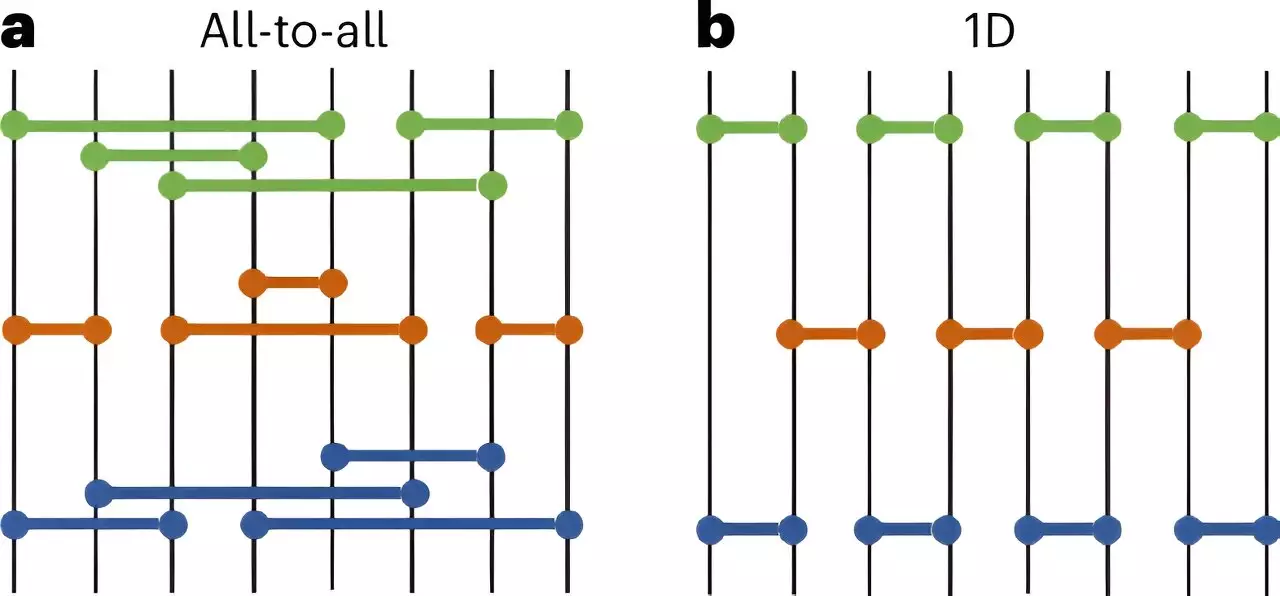Quantum computing has been increasingly recognized as a powerful tool for solving complex problems and expanding our knowledge of the universe. As researchers delve deeper into the potential of quantum computers, the importance of quantum error correction has come to the forefront. Improving the accuracy and reliability of quantum systems is crucial for unlocking their full potential in various scientific and technological applications.
A recent study published in Nature Physics on September 3, 2024, has shed light on a groundbreaking discovery in the realm of quantum error correction. The research introduces a novel method to distinguish nontrivial quantum error correction codes from trivial ones, marking a significant advancement in our understanding of quantum systems. This distinction is not arbitrary but represents a fundamental boundary that could revolutionize the way we perceive the workings of quantum systems in the physical world.
Implications for Quantum Computing and Beyond
The implications of this discovery extend beyond the realm of quantum computing. The researchers, including Jinmin Yi, Weicheng Ye, Daniel Gottesman, and Zi-Wen Liu, have demonstrated a mathematically rigorous connection between Approximate Quantum Error Correction (AQEC) code properties and the complexity of quantum circuits. This newfound connection enables scientists to assess the precision level of quantum codes accurately. Moreover, the natural emergence of AQEC codes could hold the key to unraveling some of the most profound mysteries in physics.
The impact of this discovery resonates across various scientific disciplines. For instance, researchers investigating topological order in quantum materials now have the tools to bridge the gap between entanglement conditions and code properties, leading to a deeper understanding of these unique materials. Additionally, insights gained from studying AQECs could offer valuable guidance for integrating quantum mechanics with Einstein’s theory of general relativity, opening up new possibilities for resolving longstanding physics challenges.
Dr. Daniel Gottesman, a key contributor to the study and Co-Director of the Joint Center for Quantum Information and Computer Science at the University of Maryland, emphasizes the significance of the proposed dividing line between acceptable and unacceptable quantum codes. This boundary is not arbitrary but is deeply rooted in physical principles, indicating a profound connection to the fundamental nature of quantum systems. The newfound clarity provided by this boundary line offers a foundation for further advancements in quantum error correction and its practical applications.
The study of AQECs has set the stage for future explorations into the realm of quantum error correction and its broader implications. By leveraging the insights gained from this research, scientists can delve deeper into the integration of quantum mechanics with gravitational descriptions, as well as enhance our understanding of topological order in quantum materials. These avenues of research hold promise for unlocking new frontiers in both theoretical and practical applications of quantum error correction.
The recent discovery in quantum error correction represents a significant step forward in our quest to unravel the mysteries of the quantum world. By establishing a firm foundation for evaluating quantum codes and their properties, researchers have paved the way for transformative advancements in various scientific fields. The intersection of quantum computing, condensed matter physics, and quantum gravity stands to benefit greatly from the insights gained through the study of AQECs, offering a glimpse into the exciting possibilities that lie ahead in the realm of quantum technology and scientific exploration.


Leave a Reply